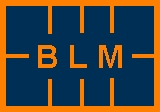Pulse Oximetry - Algorithms
Pulse oximetry is an extremely successful method for monitoring the oxygen saturation, i.e. the pulmonary function, in people. Pulse oximetry has proved itself well, and new applications for it are being developed all the time. Important examples include monitoring of the unborn child, as well as the monitoring of mobile patients. This can be extended even to the monitoring of people in their daily lives, perhaps even when they are engaged in heavy exercise. There are further possibilities for measuring people whose pulmonary function is at risk, e.g. firemen, pilots, skin divers, extreme mountain climbers. An additional clientele includes people undergoing rehabilitation, e.g. people recovering after major surgery, especially after thorax surgery or after pulmonary transplantation. Thus it has become clear that in these patients, pulse oximetry is a suitable means for prescreening in order to identify patients who need an intensive care treatment.
The above requirements indicate the necessity for pulse oximetry to become more robust in respect to movement artifacts, i.e. in respect to the suppression of motion artifacts. This is exactly the field in which BLM has invested their R&D activities: We have developed a series of totally independent algorithms, one of which proved to be especially robust for motion artifacts. We believe that any one of these algorithms by itself contributes a motion artifact performance that easily compares with Masimo®. The combination of those independent algorithms however leads to impressively reliable values and to an outstanding suppression of motion artifacts of all kinds. We propose that these highly innovative algorithms will be very useful for pulse oximetry in general. Accordingly we are making this tried and tested software available and BLM will sell licenses for these algorithms.
|
|
Signal detection from difficult (noisy) bio-signals by means of highly complex, entirely new algorithms to analyze bio signals. This technology is used principally for the ”high motion pulse oximetry” for example, in fetuses during delivery and in mobile pulse oximetry. This is exactly the application where both robust and simultaneously sensitive and safe algorithms are necessary. Complex network decisions allow the measurement of a continuous stream of data, i.e. the oxygen saturation is safely available on a beat-to-beat basis.
|





